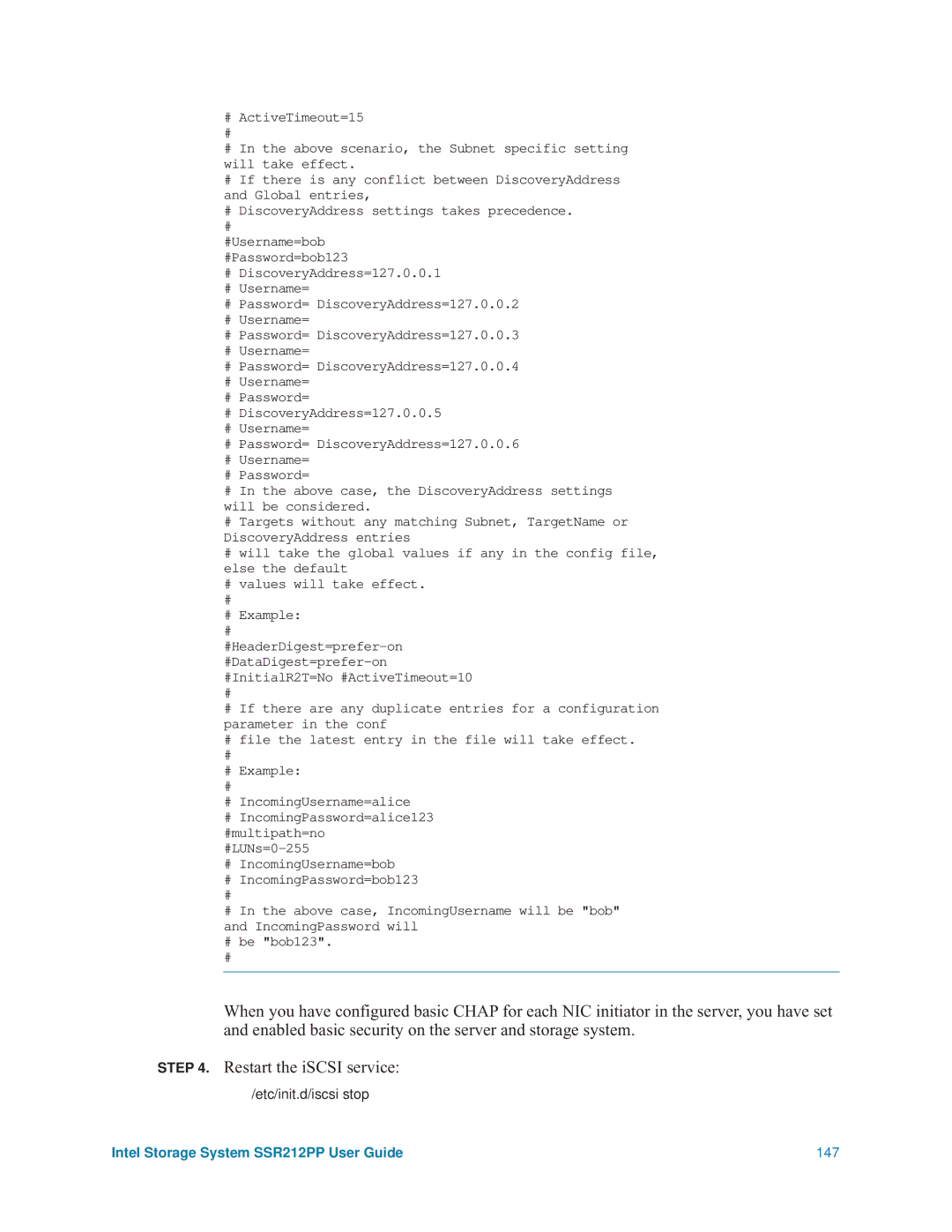#ActiveTimeout=15
#In the above scenario, the Subnet specific setting will take effect.
#If there is any conflict between DiscoveryAddress and Global entries,
#DiscoveryAddress settings takes precedence.
#
#Username=bob
#Password=bob123
#DiscoveryAddress=127.0.0.1
#Username=
#Password= DiscoveryAddress=127.0.0.2
#Username=
#Password= DiscoveryAddress=127.0.0.3
#Username=
#Password= DiscoveryAddress=127.0.0.4
#Username=
#Password=
#DiscoveryAddress=127.0.0.5
#Username=
#Password= DiscoveryAddress=127.0.0.6
#Username=
#Password=
#In the above case, the DiscoveryAddress settings will be considered.
#Targets without any matching Subnet, TargetName or DiscoveryAddress entries
#will take the global values if any in the config file, else the default
#values will take effect.
#
#Example:
#If there are any duplicate entries for a configuration parameter in the conf
#file the latest entry in the file will take effect.
#
#Example:
#IncomingUsername=alice
#IncomingPassword=alice123
#multipath=no
#IncomingUsername=bob
#IncomingPassword=bob123
#In the above case, IncomingUsername will be "bob" and IncomingPassword will
#be "bob123".
#
When you have configured basic CHAP for each NIC initiator in the server, you have set and enabled basic security on the server and storage system.
STEP 4. Restart the iSCSI service:
/etc/init.d/iscsi stop
Intel Storage System SSR212PP User Guide | 147 |
